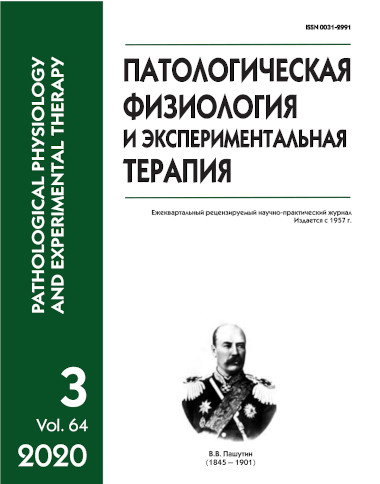Molecular and biological characteristics of keratin intermediate filaments in intact skin under systemic inflammation
Abstract
Introduction. Despite some progress in studying pathomorphological mechanisms of sepsis and improvement of therapy for critical conditions, mortality in sepsis remains high. In severe systemic inflammation, the morpho-functional state of skin is compromised; however, the mechanisms responsible for this effect are not completely understood. The role of mutations in keratinocyte cytoskeletal genes leading to disorders of keratinocyte differentiation and migration under the action of an endogenous factor induced by severe systemic inflammation, needs to be clarified. The aim of this work was to assess the molecular genetic profile of keratinocyte differentiation and migration under systemic inflammation. Methods. Fragments of intact skin from patients with confirmed sepsis (n=46) were studied with real-time polymerase chain reaction to determine the expression of keratin intermediate filament KRT1, KRT10, KRT5, KRT14, and KRT16 genes. Results. In patients with systemic inflammation, the relative expression of KRT1, KRT10, KRT5, KRT14, and KRT16 in intact skin was reduced, despite the normal expression of genes whose products support filament aggregation and cytoskeletal stability (FLG and IVL). Conclusion. In the intact skin under systemic inflammation in the absence of an external damaging factor, uncoupling of the keratinocyte differentiation from the keratinocyte proliferation was observed, which may lead to dysfunction of the skin barrier.






